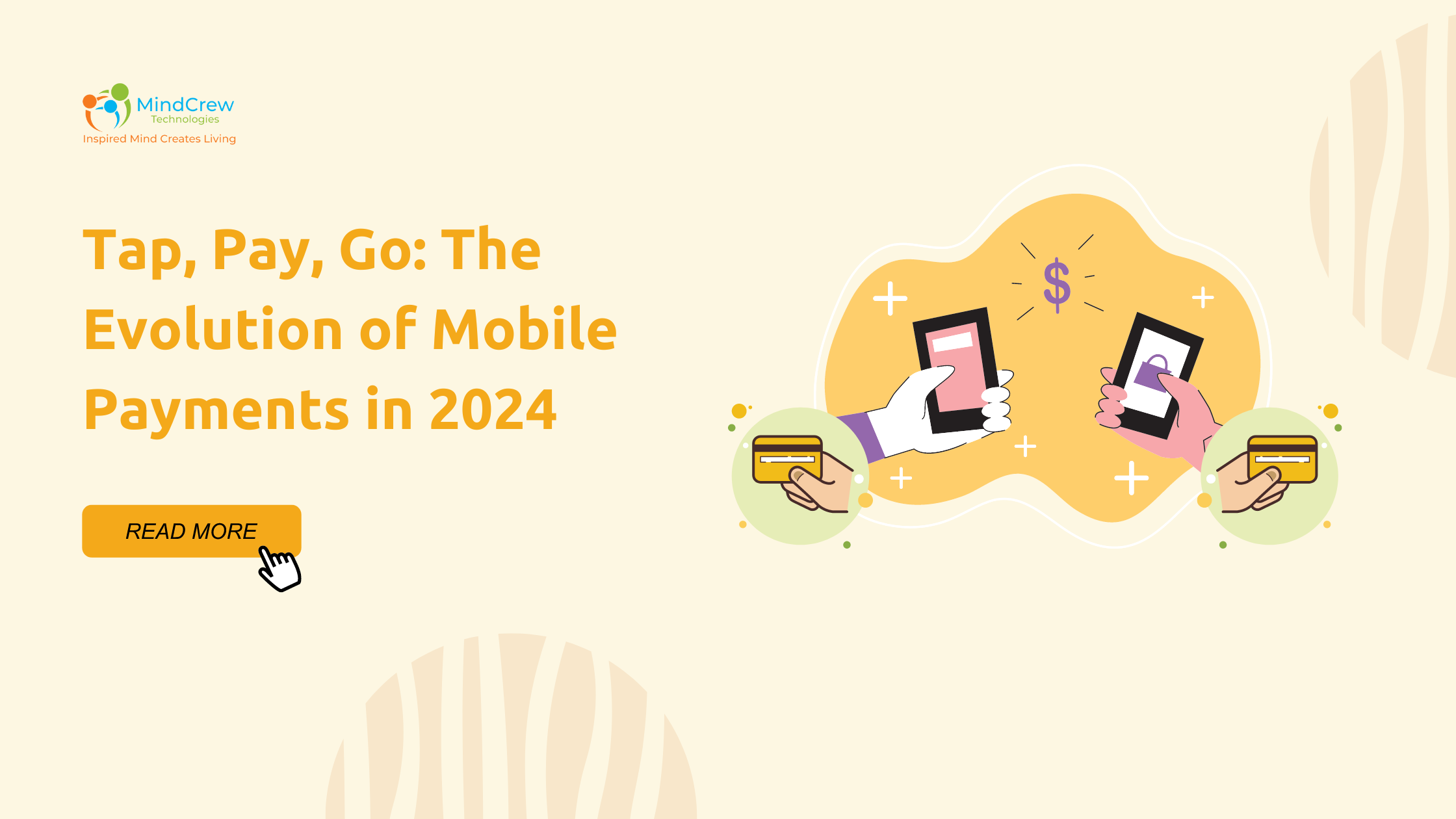Tap, Pay, Go: The Evolution of Mobile Payments in 2024
Introduction
The world of financial transactions has undergone a radical transformation over the past decade. The advent of mobile payment systems has not only revolutionized the way we make purchases but also reshaped the entire economic landscape. In 2024, the mantra “Tap, Pay, Go” epitomizes the simplicity, speed, and security that mobile payments bring to consumers and businesses alike. This article delves into the evolution of mobile payments, examining technological advancements, market trends, security measures, and the future trajectory of this dynamic industry.
Historical Context: From Barter to Mobile Payments
To appreciate the evolution of mobile payments, it’s essential to understand the broader history of financial transactions. The journey from barter systems to digital currencies is marked by significant milestones:
- Barter System: The earliest form of trade involved the direct exchange of goods and services.
- Coinage and Currency: The introduction of coins and paper money standardized trade and facilitated economic growth.
- Credit Cards: In the mid-20th century, credit cards revolutionized personal finance, offering a convenient and secure method of payment.
- Digital Payments: The rise of the internet in the late 20th and early 21st centuries paved the way for online banking and digital wallets.
The Rise of Mobile Payments
The evolution from digital payments to mobile payments is a natural progression driven by technological advancements and changing consumer behavior.
Key Drivers of Mobile Payment Adoption
- Smartphone Proliferation: The widespread adoption of smartphones has been a crucial factor. With over 6 billion smartphone users worldwide in 2024, the potential for mobile payment growth is immense.
- Internet Penetration: Increasing internet access, especially in developing countries, has expanded the reach of mobile payment services.
- Consumer Convenience: Mobile payments offer unparalleled convenience, allowing users to make transactions anytime, anywhere.
- Security Enhancements: Advanced encryption and biometric authentication have addressed security concerns, making mobile payments more secure than traditional methods.
Technological Advancements in Mobile Payments
The technological infrastructure underpinning mobile payments has seen remarkable advancements, enhancing user experience and security.
Near Field Communication (NFC)
NFC technology enables contactless payments by allowing devices to communicate when in close proximity. This technology is the backbone of services like Apple Pay, Google Wallet, and Samsung Pay. NFC ensures quick and secure transactions, making it the preferred choice for many consumers.
Biometric Authentication
Biometric security features, such as fingerprint scanning and facial recognition, have become standard in modern smartphones. These technologies provide an additional layer of security, ensuring that only authorized users can initiate transactions.
Blockchain and Cryptocurrencies
Blockchain technology, which underpins cryptocurrencies like Bitcoin and Ethereum, has introduced a decentralized approach to digital transactions. While not yet mainstream for everyday purchases, cryptocurrencies offer potential for future integration with mobile payment systems, promising increased transparency and security.
Artificial Intelligence and Machine Learning
AI and machine learning algorithms enhance fraud detection and prevention in mobile payment systems. By analyzing transaction patterns and identifying anomalies, these technologies help safeguard users’ financial data.
Market Trends and Consumer Behavior
The mobile payment landscape in 2024 is characterized by several key trends and shifts in consumer behavior.
Contactless Payments Surge
The COVID-19 pandemic accelerated the adoption of contactless payments as consumers sought hygienic transaction methods. This trend has continued, with contactless payments becoming the norm in many regions.
Integration with E-commerce
Mobile payments are increasingly integrated with e-commerce platforms, streamlining the checkout process. One-click payments and digital wallets have reduced cart abandonment rates, boosting online sales.
Peer-to-Peer (P2P) Payments
P2P payment apps like Venmo, PayPal, and Cash App have gained popularity for their convenience in transferring money between individuals. These platforms have expanded their services to include bill splitting, fundraising, and even cryptocurrency trading.
Mobile Banking Apps
Traditional banks have embraced mobile technology, offering comprehensive banking apps that include mobile payment features. These apps provide users with a seamless banking experience, from checking balances to making payments.
Security Measures and Challenges
While mobile payments offer numerous advantages, they also present security challenges that must be addressed to maintain consumer trust.
Encryption and Tokenization
Encryption converts sensitive data into unreadable code, ensuring that it cannot be intercepted during transmission. Tokenization replaces sensitive data with unique tokens, which are useless if intercepted. Both technologies are crucial in securing mobile transactions.
Multi-factor Authentication (MFA)
MFA adds an extra layer of security by requiring multiple forms of verification before authorizing a transaction. This may include a password, a biometric scan, and a one-time code sent to the user’s mobile device.
Regulatory Compliance
Regulatory frameworks, such as the Payment Card Industry Data Security Standard (PCI DSS) and the General Data Protection Regulation (GDPR), establish guidelines for protecting consumer data. Compliance with these regulations is essential for mobile payment providers.
Emerging Threats
Cybersecurity threats continue to evolve, with hackers employing sophisticated techniques to breach systems. Mobile payment providers must stay ahead of these threats by continuously updating their security protocols.
The Global Landscape of Mobile Payments
Mobile payment adoption varies significantly across different regions, influenced by factors such as infrastructure, regulation, and consumer preferences.
North America
In North America, mobile payments are widely adopted, with Apple Pay and Google Wallet leading the market. The region benefits from a robust financial infrastructure and high smartphone penetration.
Europe
Europe has seen rapid growth in mobile payments, driven by strong regulatory frameworks and consumer trust in digital banking. The European Union’s PSD2 directive has facilitated open banking, fostering innovation in the sector.
Asia-Pacific
The Asia-Pacific region is a leader in mobile payment adoption, with China and India at the forefront. Mobile payment giants like Alipay and WeChat Pay dominate the Chinese market, while India’s Unified Payments Interface (UPI) has revolutionized digital transactions.
Latin America and Africa
While mobile payment adoption in Latin America and Africa is growing, it faces challenges such as limited internet access and financial infrastructure. However, mobile money services like M-Pesa in Kenya have demonstrated the potential for mobile payments to drive financial inclusion.
The Future of Mobile Payments
The future of mobile payments is bright, with several emerging trends poised to shape the industry.
Integration with the Internet of Things (IoT)
The IoT revolution will see everyday devices connected to the internet, enabling seamless transactions. Smart refrigerators, for example, could automatically order groceries and pay for them using mobile payment systems.
Enhanced Personalization
AI-driven personalization will tailor payment experiences to individual users. Personalized offers, spending insights, and financial advice will become integral features of mobile payment apps.
Digital Identity Verification
Advancements in digital identity verification will enhance security and streamline user onboarding. Biometric and blockchain-based identity solutions will reduce fraud and simplify authentication.
Cross-border Payments
The future will see more efficient cross-border payment solutions, reducing costs and delays associated with international transactions. Blockchain and cryptocurrency-based systems hold significant promise in this area.
Conclusion
The evolution of mobile payments in 2024 is a testament to the power of technology to transform everyday experiences. From the convenience of tap-and-go transactions to the security of biometric authentication, mobile payments have redefined how we interact with money. As the industry continues to innovate, the future promises even greater integration, personalization, and security, ensuring that the mantra “Tap, Pay, Go” remains at the forefront of financial transactions.







